ASUS My Cinema EHD3-100 Dual Hybrid TV Card Review
A Closer Look At The My Cinema EHD3-100
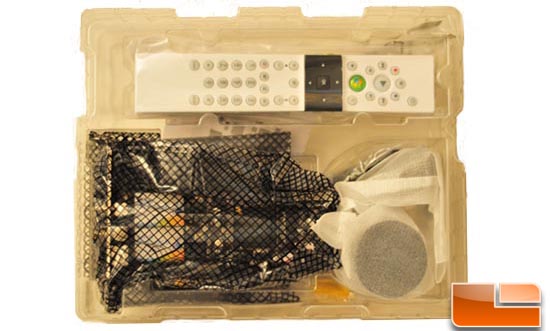
Inside the box we see a nice blister pack. With the prevalence today of plastic packaging that is near impossible top open without a knife, and eventually a grenade, I am pleased to say, this plastic packaging was easy to open!
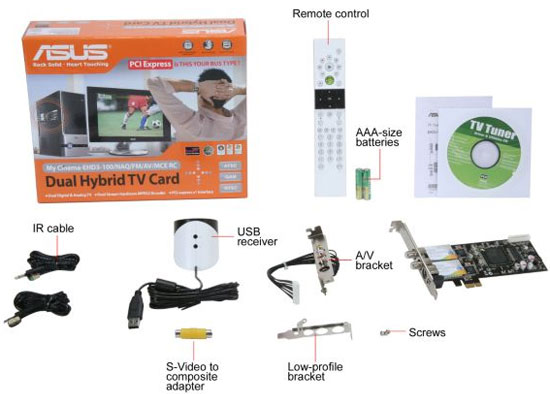
Here are all the contents laid out. I was immediately pleased to see they included batteries with the remote. Yes, I know, this may seem like a small thing, but in today’s economy, more and more companies are no longer provided batteries anymore. Everything was nicely packaged and easy to open. I was disappointed to see no instructions, only a thin “quick-start” guide. I know – I wouldn’t have read the instructions anyway, but that doesn’t mean I don’t refer to them. I hate having to open up a PDF file, it’s just an extra step to have to do when looking for information. PDF instructions have their benefits as well, so in my perfect world, companies should include both.
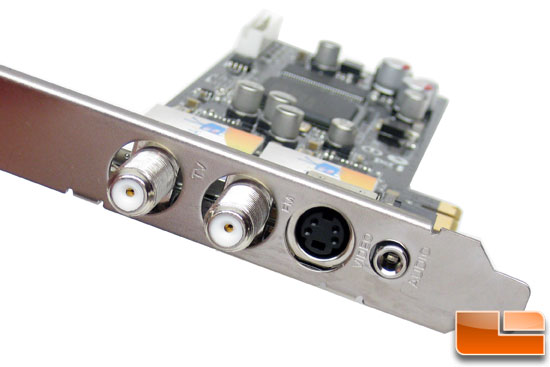
The card seemed sturdy and well designed. The back of the ASUS My Cinema EHD3-100 HDTV/FM Tuner has two
antenna ports, one for RF television and one for FM radio, an S-Video port
and an analog stereo mini plug port (the headphone jack) for audio input.
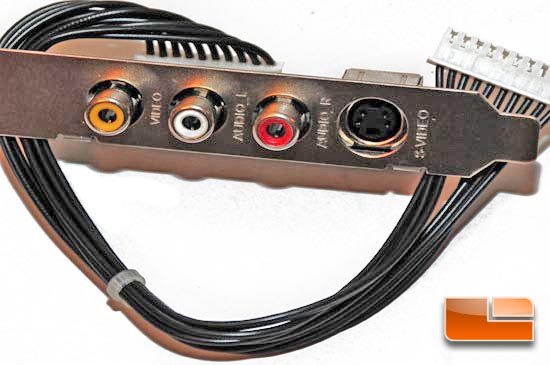
The expansion bracket includes
another s-video port as well as a composite video port and a pair of
stereo analog audio ports. It has a cable that connects into a plug in
the rear corner of the main tuner card. The expansion bracket does not
come with a slim (low-profile) backplate, so a user would only be able
to fit the main card into their case.
For those that like dirty pictures, here are some naked chips on the board:
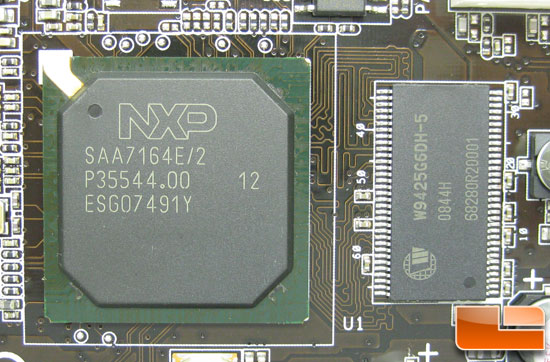
The heart of the ASUS My Cinema EHD3-100 HDTV/FM Tuner is the NXP
SAA7164E/2 PC TV system-on-chip (SOC) that is shown above. This is a
unique dual hybrid PC TV tuner for the North American market with
hardware encoding. The highly integrated NXP SAA7164 SoC enables true
watch and record capability, integrating dual-channel TV capability
with native hardware encoding to reduce the CPU overhead demands on
consumer PC systems. It should be noted that this is the same SoC that
is being used on the Hauppauge WinTV-HVR-2250 PCI Express TV Tuner as well. Next to that can see the 4MB Winbond W9425G6DH5 DDR SDRAM chip that is being used for cache.
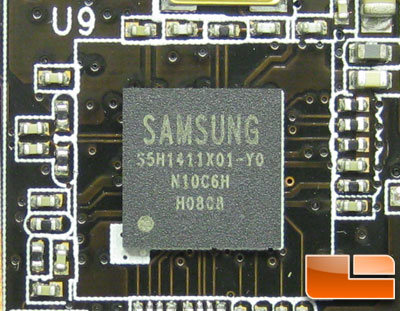
The ASUS My Cinema EHD3-100 has a pair of ATSC channel receivers,
which are the Samsung S5H1411. These digital TV receiver chips enable
digital TVs designed for the U.S. market to receive both vestigial
sideband (VSB) broadcasts and quadrature amplitude modulation (QAM)
cable signals. Each of these are a DTV demodulator that performs
sampled IF to MPEG transport stream. It is compliant with ATSC 8-VSB
and ITU-T J83 Annex B specification. It integrates the advanced
algorithms and filtering techniques that deliver the ideal performance
in the severe channel environment for digital TV applications such as
flat panel TV, terrestrial set-top boxes, and TV reception USB dongles.
The performance of the product achieves the very close to the
theoretical limits by employing direct IF sampling architecture, robust
synchronization and channel equalization. It contains a 12-bit A/D
converter and a PWM generator for automatic gain control. Also host
interface with an I2C bus is included. Each of these chips consume less
than 200mW, so they are power efficient as well.

Comments are closed.